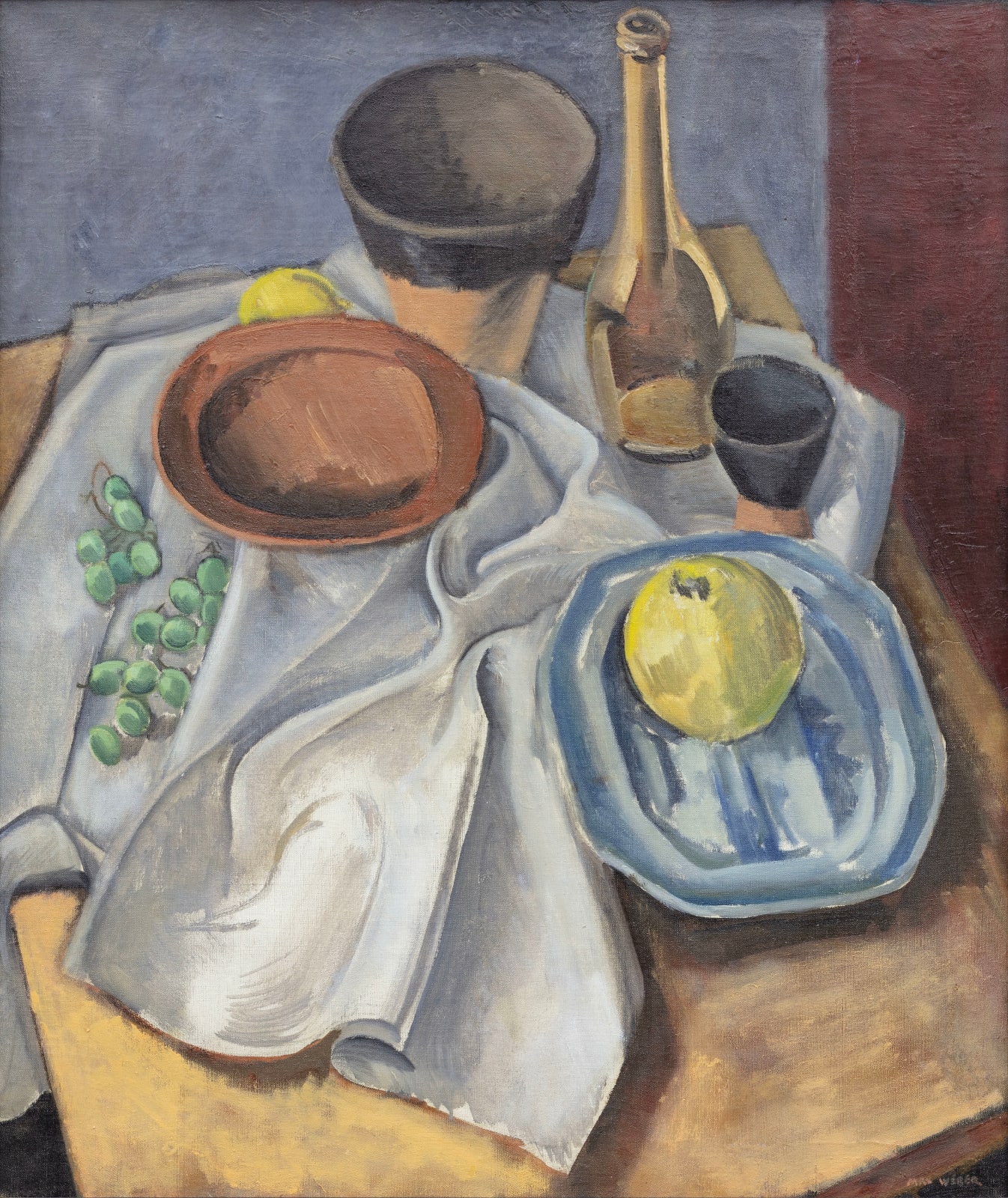Max Weber American, 1881-1961
Egyptian Pot and Fruit, 1923
Oil on canvas
30 x 25 inches
76.2 x 63.5 cm
76.2 x 63.5 cm
Signed at lower right: MAX WEBER
Schoelkopf Gallery is the exclusive worldwide representative of the Max Weber Foundation. Max Weber's large-scale painting, Egyptian Pot and Fruit (1923) serves as a testament to the artist's enduring dedication...
Schoelkopf Gallery is the exclusive worldwide representative of the Max Weber Foundation.
Max Weber's large-scale painting, Egyptian Pot and Fruit (1923) serves as a testament to the artist's enduring dedication to still life. An Egyptian black-topped redware jar, a type of pottery frequently discovered in the Nubian region along the Nile River, is positioned prominently at the top center of the composition. This Egyptian pot becomes a recurrent element in Weber's still lifes, notably appearing in The Blue Labeled Bottle (1917-18), among others. Through his still life practice, Weber placed profound emphasis on quotidian objects, both contemporary and historical, asserting, "Through things we ever establish new relationships between ourselves and the principles that underlie things. The simplest object may have embodied in it the finest degree of excellence." (Max Weber, Essays on Art, New York: William Edwin Rudge, 1916, p. 35)
Max Weber's large-scale painting, Egyptian Pot and Fruit (1923) serves as a testament to the artist's enduring dedication to still life. An Egyptian black-topped redware jar, a type of pottery frequently discovered in the Nubian region along the Nile River, is positioned prominently at the top center of the composition. This Egyptian pot becomes a recurrent element in Weber's still lifes, notably appearing in The Blue Labeled Bottle (1917-18), among others. Through his still life practice, Weber placed profound emphasis on quotidian objects, both contemporary and historical, asserting, "Through things we ever establish new relationships between ourselves and the principles that underlie things. The simplest object may have embodied in it the finest degree of excellence." (Max Weber, Essays on Art, New York: William Edwin Rudge, 1916, p. 35)
Provenance
The artist; toEstate of the artist, 1961; to
Max Weber Foundation, 2021 until the present
Exhibitions
The Art Students League of New York, New York, To Live is to Paint: Wilhelmina Weber Furlong, Dorothy Dehner and American Modernism at the Art Students League of New York, July 21–August 23, 2022Schoelkopf Gallery, New York, Max Weber: Art and Life Are Not Apart, January 19–April 5, 2024
Subscribe to our mailing list to receive updates from the gallery
* denotes required fields
We will process the personal data you have supplied in accordance with our privacy policy (available on request). You can unsubscribe or change your preferences at any time by clicking the link in our emails.

